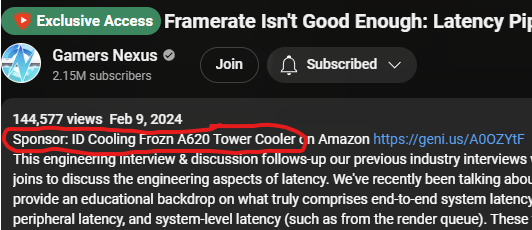- Joined
- May 18, 1997
- Messages
- 55,635
Sponsored by NVIDIA, but this is really good lesson on gaming input latency. Have to say, I learned a couple things. Really good down to earth talk.
View: https://youtu.be/Fj-wZ_KGcsg
View: https://youtu.be/Fj-wZ_KGcsg
![[H]ard|Forum](/styles/hardforum/xenforo/logo_dark.png)
